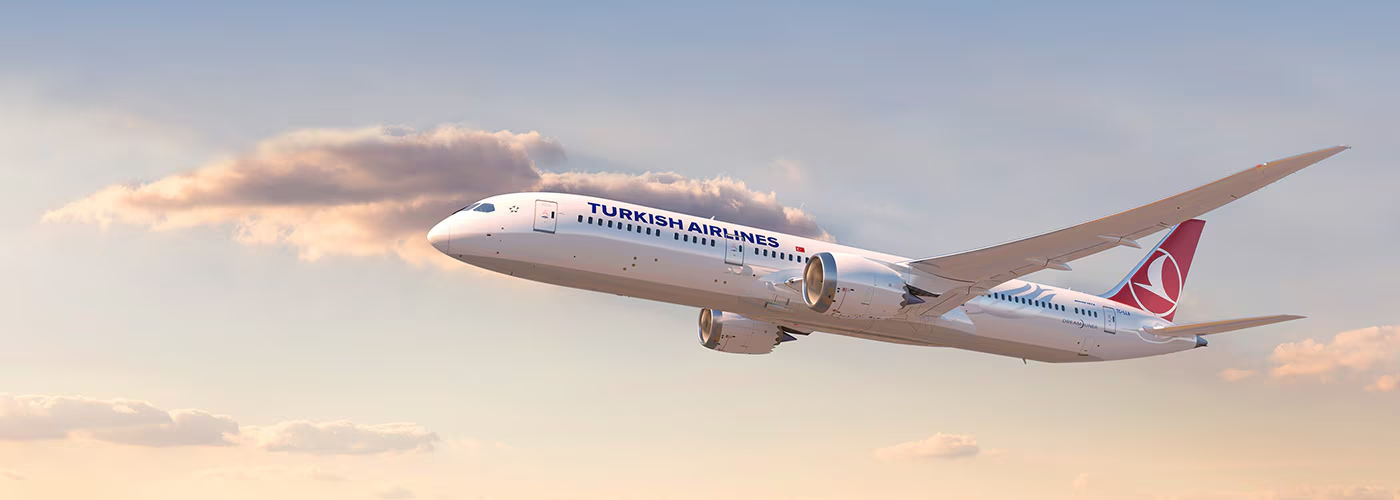All You Need To Know About the Speed of Passenger Planes
Every year, more than four billion people opt for the skies to satisfy their travel needs, making air travel the go-to mode of transportation for the globe. Not only is it the safest form of long-distance travel, but it’s also the fastest. Over the years, advancements in aviation technology have led to planes becoming faster, more fuel-efficient, and significantly safer. In this article, we’ll delve into the fascinating aspects of the speed of passenger planes, exploring everything from average speeds to the fastest commercial planes that ever flew.
A Look at Average Speeds

When it comes to air travel, you might notice that flight durations vary even when you fly the same route. While factors like weather conditions and flight path play a role, the type of aircraft you’re on and its cruising speed are also major contributors. The aviation industry is incredibly diverse, boasting a range of aircraft from the DHC Dash 8-Q400 turboprop to the mammoth Airbus A380. Each of these has its own average cruising speed.
Commercial planes, on average, have a cruising speed of 500 to 521 knots—that’s approximately 575-600 mph or about Mach 0.78 to 0.81. To compare, private jets often cruise at speeds between 435 to 521 knots or around Mach 0.68 to 0.81. Speed is crucial, as it impacts everything from fuel efficiency to travel time.
Understanding Speed Measurements: Ground Speed vs. Airspeed
Measuring speed in aviation is different from how we do it for ground vehicles. In aviation, we primarily talk about ground speed and airspeed. Ground speed is how fast an airplane moves relative to the Earth’s surface. Usually, at around 35,000 feet, a passenger plane can have an average ground speed ranging from 300 to 600 knots. This speed can be influenced by natural elements like headwinds and tailwinds.
Then we have airspeed, which refers to the speed of the airplane relative to the air it’s moving through. There are two types of airspeed commonly referred to in the aviation world: Indicated Airspeed (IAS) and True Airspeed (TAS). IAS is what you see on the airspeed indicator inside the cockpit, and it doesn’t account for instrument errors or atmospheric conditions. TAS, on the other hand, is corrected for these factors and represents the aircraft’s speed relative to the air mass in which it is flying. It is the most accurate representation of an aircraft’s speed.
Record-Holding Commercial Planes

While many aircraft serve the commercial aviation industry, some models stand out for their speed:
Airbus A350-1000
The Airbus A350-1000 holds a top speed close to 683 mph, or Mach 0.89. Beyond just being fast, it’s also celebrated for being one of the most fuel-efficient planes in the skies.
Boeing 747-8i
Another aircraft that has earned its place among the fastest is the Boeing 747-8i, with its top speed of 660 mph or Mach 0.86. Although no longer in production, it remains in operation across several airlines.
Boeing 787 Dreamliner
The Dreamliner series from Boeing can hit speeds of up to 690 mph, which translates to Mach 0.9. Currently, more than 39 airlines operate this model, making it one of the most popular and fastest commercial planes today.
A Nostalgic Look at the Concorde

It’s hard to talk about speed without mentioning the Concorde. This plane shattered all commercial speed records with a cruising speed of 1,350 mph, equal to Mach 2. It could also reach heights of up to 60,000 feet. Its fastest transatlantic flight took just 2 hours and 52 minutes to go from New York to London.
Read more about the Concorde: Concorde: the Supersonic Airliner, and Why did it Stop Flying?
Current Speedsters in Private Aviation
The realm of private jets also has some speed demons. Aircraft like the Dassault Falcon 7X, Gulfstream G700, Cessna Citation X, and Bombardier Global 8000 hold their own when it comes to speed, pushing the boundaries in private aviation.
Understanding speed in aviation is crucial, given its impact on everything from fuel efficiency to travel time. While we might not yet have commercial planes that can match the jaw-dropping speeds of the Concorde, technological advancements continue to push the envelope. With ongoing discussions around supersonic commercial travel, the sky’s the limit when it comes to the future of aircraft speed.
What do you think about the speeds achieved by modern aircraft? Would you like to see a return of supersonic commercial travel? Share your thoughts in the comments below.
Youssef Yahya is the CEO and Founder of Aviation for Aviators, a platform dedicated to the aviation industry. With over 3 years of experience as an aviation writer, Youssef is passionate about sharing his insights on aviation, entrepreneurship, and the broader business landscape. As a Teaching Assistant in Entrepreneurship at Nile University, he also nurtures the next generation of entrepreneurs. When he’s not exploring the skies or business ventures, you can find him saying, ‘Drag your coffee, and let’s talk aviation, entrepreneurship, and football.’
You might also like:
- Boeing 737-300 Veers Off Senegal Runway, 10 Injured, 4 Critical
- Static Discharge |VS| St. Elmo’s Fire
- Plane Crashes in Virginia After Pilot Passes Out
- Breaking: United Finds Loose Bolts on Boeing 737 MAX 9 Aircraft Plug Doors
- The World’s Shortest Commercial International Flights
Discover more from Aviation for Aviators
Subscribe to get the latest posts sent to your email.














Post Comment